When a Sign Fails, It’s Never Just the Sign
In industrial environments, safety signage functions as critical infrastructure. A poorly designed or short-lived sign isn’t merely a minor oversight—it can lead to serious incidents, compliance violations, or costly downtime. For overseas B2B buyers sourcing in volume, sign failure becomes a compound liability.
Take this scenario: a rooftop-mounted junction box lacked a UV-rated warning label. Within six months, sunlight degraded the ink. During inspection, the faded sign failed to convey its message, triggering a non-conformance report. The real consequence? Shipment delays, escalated costs, and reputational risk.
At YISHANG, we treat signage not as accessories but as engineered components. Each sign we produce is informed by substrate science, regulatory understanding, and lifecycle cost considerations.
Let’s unpack what matters most for procurement teams making high-volume, high-risk signage decisions—and how strategic sign sourcing can become a compliance asset rather than a liability.
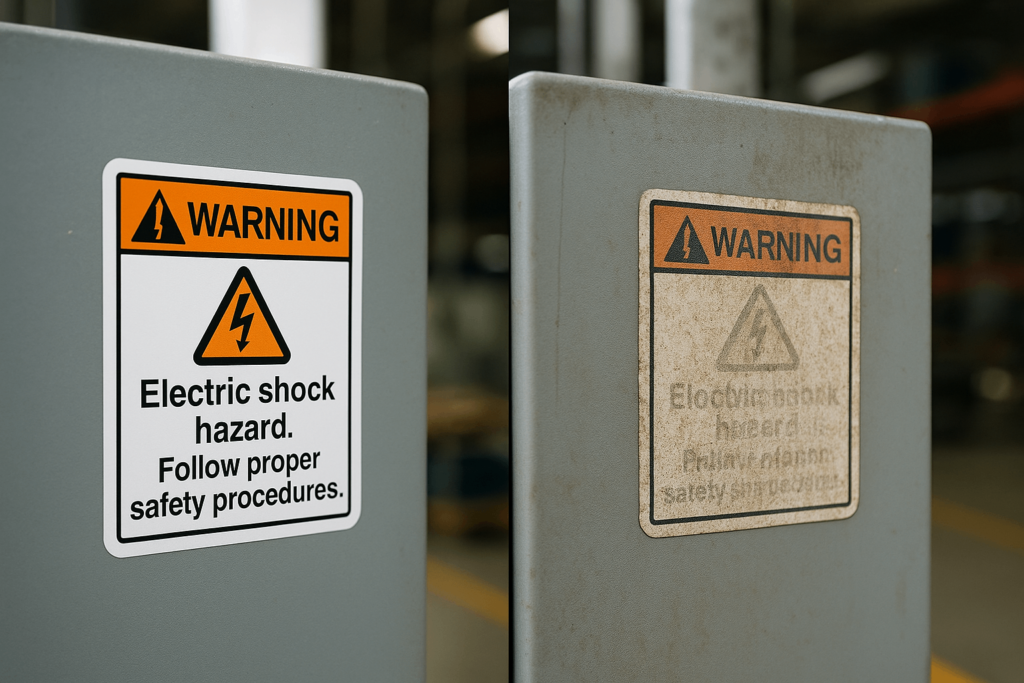
From Compliance to Context: Why Standard Signs Fail in the Field
At first glance, a sign that meets OSHA or ISO requirements might seem sufficient. But in practice, standards are only the starting point—not the finish line.
Procurement specs often focus on ticking regulatory boxes—OSHA layouts, ANSI colors, ISO symbols. Yet real-world environments introduce variables that outpace static checklists.
In automated plants or multilingual workspaces, even “compliant” signs fail if icons are ambiguous, colors fade, or positioning doesn’t align with operator lines of sight. A warehouse illuminated by LEDs may distort color perception; safety goggles might obscure clarity.
To ensure operational effectiveness, sign design must respond to field conditions. Ask yourself: Will this sign remain readable through fogged lenses? Does it account for varied literacy levels? Can it survive solvent exposure or steam cycles?
Field durability and user visibility matter as much as regulatory formatting.
As we move from static standards to dynamic realities, let’s examine how regional compliance frameworks further shape signage decisions.
One Global Market, Many Safety Codes
If you’re sourcing for multiple countries or regions, you know that compliance isn’t universal—it’s jurisdiction-specific. Understanding this is essential to avoiding costly hold-ups at customs or failed audits during cross-border inspections.
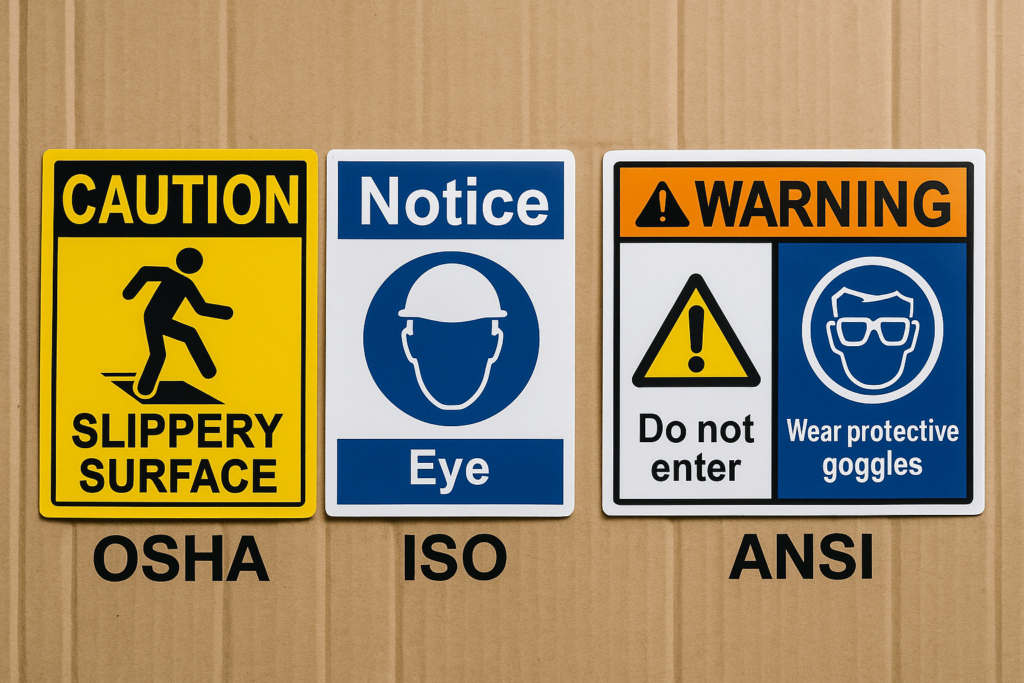
Key Regulatory Frameworks to Navigate
| Standard | Region | Focus Area | Common Applications |
|---|---|---|---|
| OSHA 1910.145 | USA | Text and color for hazards | Manufacturing floors |
| ANSI Z535 | North America | Visual clarity and layout | Machine labels, notices |
| ISO 7010 | EU/Global | Universal symbols | Export packages, facility signage |
| GHS / CLP | Global | Chemical hazards | Drums, tanks, containers |
Each market prioritizes different visual cues. A symbol for “mandatory action” in Japan may imply caution in Europe. For high-volume procurement across jurisdictions, partnering with a manufacturer like YISHANG that adapts to local norms reduces clearance delays and liability exposure.
Next, let’s explore why material compatibility is just as critical to long-term compliance as getting the iconography right.
Materials That Match the Mission
Environmental compatibility isn’t just about durability—it determines compliance lifespan. Your material choices need to anticipate real-world degradation before they impact safety or create non-conformance.
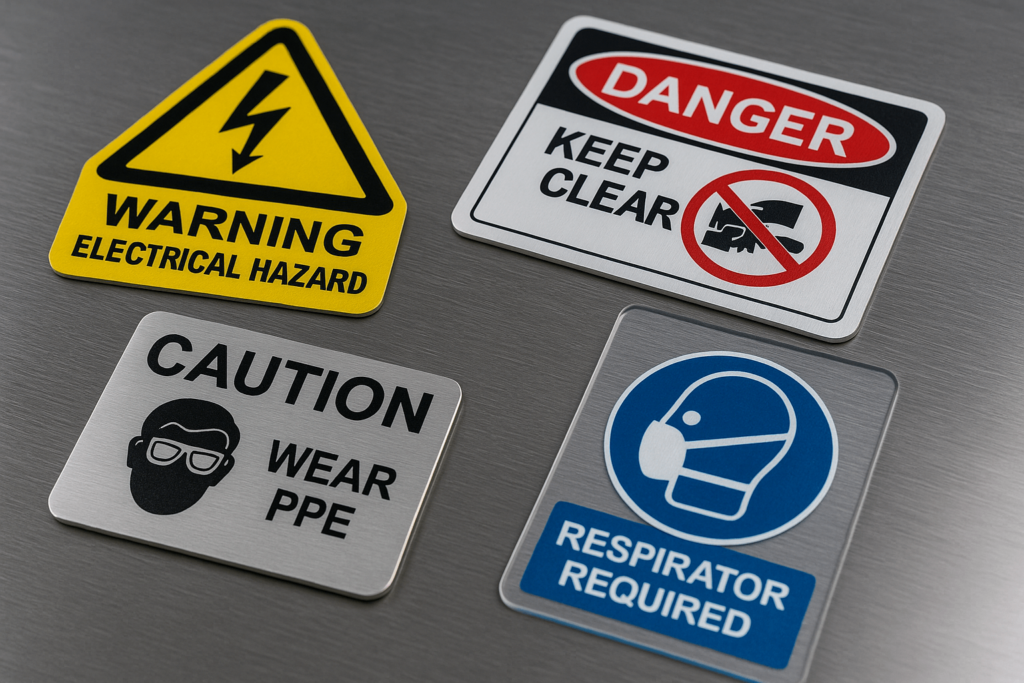
Match Material to Environment
- Outdoor cabinets or solar battery enclosures require UV-resistant anodized aluminum with sealed lamination.
- Food or cleanroom zones demand 304/316 stainless steel with FDA/NSF-compliant coatings.
- Chemical handling areas benefit from polyester or PVDF, tested for acid and solvent resistance.
- High-vibration equipment zones call for rigid substrates with screw-fastened mounts—not adhesives.
For wholesale projects, always request validation data such as ASTM B117 salt spray resistance, NEMA/IP compatibility, and RoHS/REACH declarations.
With material reliability in check, it’s time to shift focus to lifecycle economics—because procurement is never just about upfront pricing.
Think in Lifecycle Terms, Not Unit Cost
Initial cost is easy to measure—but total cost of ownership (TCO) tells the real story. A sign that deteriorates in under a year carries hidden costs: labor for reinstallation, failed audits, and safety incidents.
Consider the Total Cost of Ownership (TCO)
- A standard PVC tag might cost $0.60 but degrade in 10 months.
- A laser-engraved aluminum plate at $1.50 could last 5+ years without touch-up.
Better signage reduces downstream costs per install site.
Examples That Drive ROI
- Photoluminescent aluminum: critical for power outages and evacuation paths.
- Anti-fog coated labels: maintain clarity in washdown environments.
- Rigid UV-stabilized polycarbonate: ideal for sun-exposed telecom enclosures.
Include TCO benchmarks in your RFQs. Request real-world weathering test reports. This data guides not only better pricing decisions but ensures regulatory continuity over time.
With your lifecycle strategy defined, the next link in the chain is execution: How precisely are your signs made?
Precision Manufacturing for Seamless Integration
Even the best material or compliance design fails if manufacturing lacks precision. In high-volume safety programs, every misalignment costs time. A mounting hole 1mm off or an oversized plate delays technicians and erodes efficiency.
What to Specify for Production
- ±0.2mm laser cutting tolerance for exact fit
- Drilled hole patterns matching IP/NEMA enclosures
- Custom icons, logo branding, serial QR coding
- First-article inspection and dimensional reports
YISHANG‘s manufacturing systems integrate lot traceability, standardized batch QA, and tailored packaging—supporting global rollout with industrial-grade precision.
Once signs are installed, though, the job isn’t done. Maintenance and management complete the lifecycle.
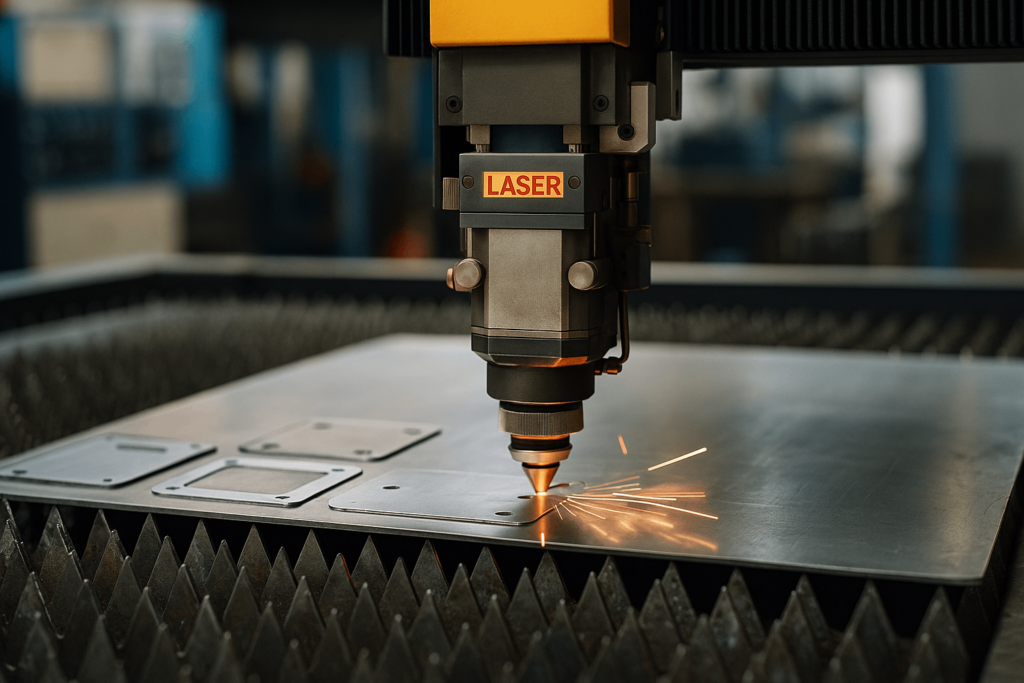
Systemizing Post-Delivery Signage Management
Signs don’t manage themselves after installation. That’s why a signage plan should include routine checkups, replacements, and traceability.
Create a Maintenance Protocol
- Map all signage locations in a digital maintenance registry
- Conduct quarterly checks to identify wear, corrosion, or UV fade
- Maintain on-site replacement kits for high-risk areas
Using serialized QR-coded tags simplifies traceability and reordering. With structured shipment manifests, YISHANG enables end-to-end signage lifecycle management.
Let’s now consider whether going “digital” makes sense—or if engineered passive signage still outperforms for fixed-hazard environments.
Smart Signage or Smart Procurement?
Digital signage systems (LED indicators, IoT-linked alerts) can enhance visibility—but they introduce dependencies: power sources, controllers, firmware.
Before investing, assess whether digital solutions truly add value for the hazard type. For most factory or logistics deployments, passive systems offer better ROI.
Optimized Passive Solutions
- Reflective overlays for high-visibility zones
- Tri-lingual icon stacks for global workforce clarity
- Snap-mount brackets for non-invasive install
Reserve active signage for dynamic hazards. For fixed conditions, engineered static signs remain the cost-effective standard.
Choosing the right signage solution is one step—the next is choosing the right partner.
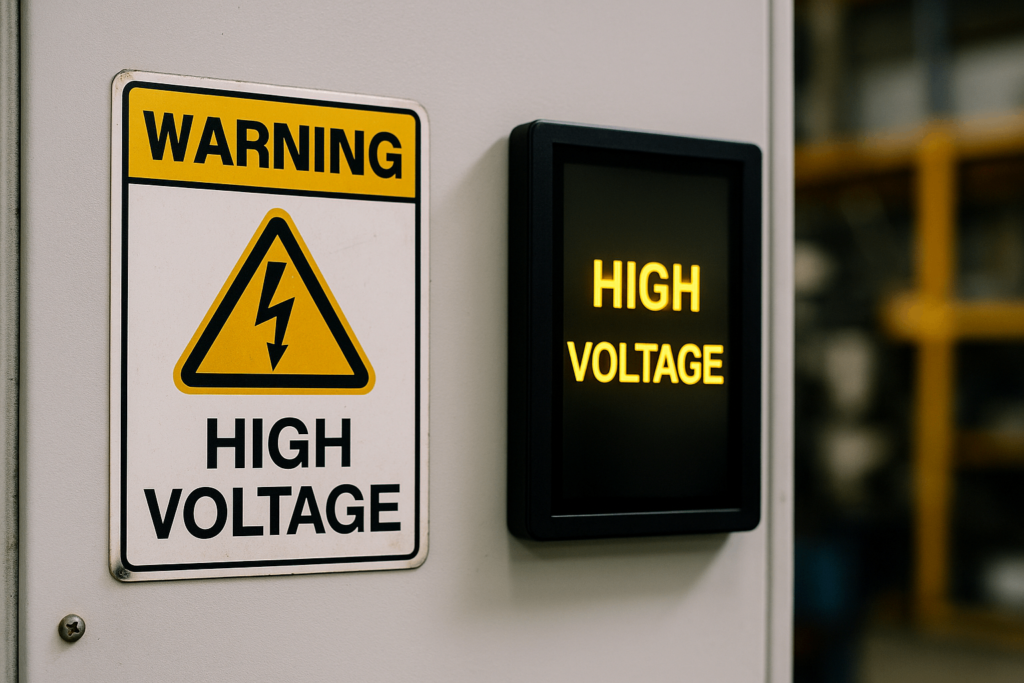
Your Sign Supplier is Your Compliance Ally
Your signage vendor isn’t just a supplier—they’re part of your compliance ecosystem. Every sign affixed to an electrical enclosure or control cabinet is a point of regulatory exposure. A reliable supplier ensures that your signage program remains audit-ready.
Procurement Questions to Ask
- Can they scale to 1000+ signs/month without QA drift?
- Do they operate under ISO 9001 and RoHS-aligned protocols?
- Are they fluent in mounting compliance (NEMA, IP65, IP66)?
- Do they support private labeling and technical drawing reviews?
YISHANG works with OEMs in energy, automation, and public infrastructure—delivering compliant, scalable signage solutions.
Before wrapping up, let’s return to the big picture: How does signage reflect your brand, integrity, and workplace culture?
Your Signs Reflect Operational Integrity
Inspectors, partners, and clients often form first impressions based on labeling. Misaligned, faded, or inconsistent signs imply risk. Conversely, clean, standardized signage signals diligence.
Quick Facility Readiness Check
- Are your signs aligned with enclosure ratings?
- Are PPE messages present in relevant zones?
- Do multilingual staff clearly interpret warnings?
- Are all signs intact, weatherproof, and consistently mounted?
If not, it’s time to reassess. A strong signage program doesn’t just meet regulations—it reinforces professionalism.
Ready to future-proof your facility’s safety signage?
Connect with the YISHANG team for tailored, regulation-ready sign systems built for global scale.
Frequently Asked Questions (FAQ)
Q: What is the most durable material for industrial safety signs?
A: Laser-engraved anodized aluminum or UV-stabilized polycarbonate. These materials resist fading, corrosion, and mechanical stress.
Q: How often should safety signs be replaced in harsh environments?
A: Generally every 18–24 months, but high-UV or chemical zones may require quarterly inspections and annual replacement.
Q: Can signs meet both OSHA and ISO requirements simultaneously?
A: Yes, YISHANG produces hybrid-compliant signage designed to align with multiple international standards.
Q: Is it worth investing in digital signage systems?
A: For dynamic or real-time hazards—yes. But for fixed-risk zones, passive engineered signage offers better long-term ROI.
Q: What is the typical lead time for custom metal safety signage?
A: Depending on complexity and volume, most orders ship within 7–15 business days globally.

